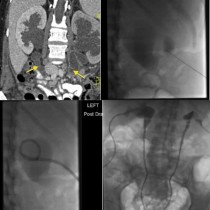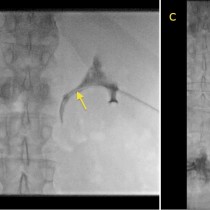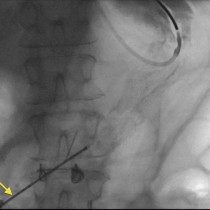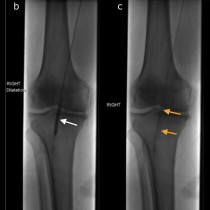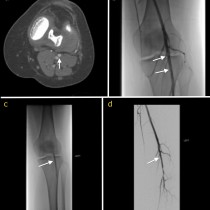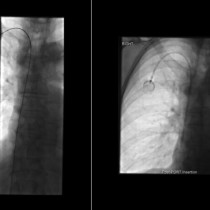Biliary drainage and stenting
Biliary drainage and stenting. This 76 year old man has biliary obstruction due to unresectable pancreatic cancer, which was obstructing his distal common bile duct (CBD). The first image, (a), shows an access needle which has been inserted into one of the dilated intrahepatic bile ducts using ultrasound guidance. On this fluoro image, a guide wire has been advanced through the needle into the CBD. The needle was then removed and a plastic sheath (b) advanced over the guide wire, through which the remainder of the procedure can be performed. Contrast injection shows the dilated CBD on this image. A guide wire and catheter, image (c), are then manipulated through the strictured CBD segment, past the ampulla and into the duodenum. The stricture is measured so that a stent of appropriate length is used (d). The metal stent comes preloaded on a catheter that also contains a balloon; when it has been placed across the CBD stricture, the balloon is inflated (e) so that the stent expands and is then left behind (final image, (f)). Note that a small pigtail catheter has been left in position above the stent. This is an external biliary drain, and is usually left


